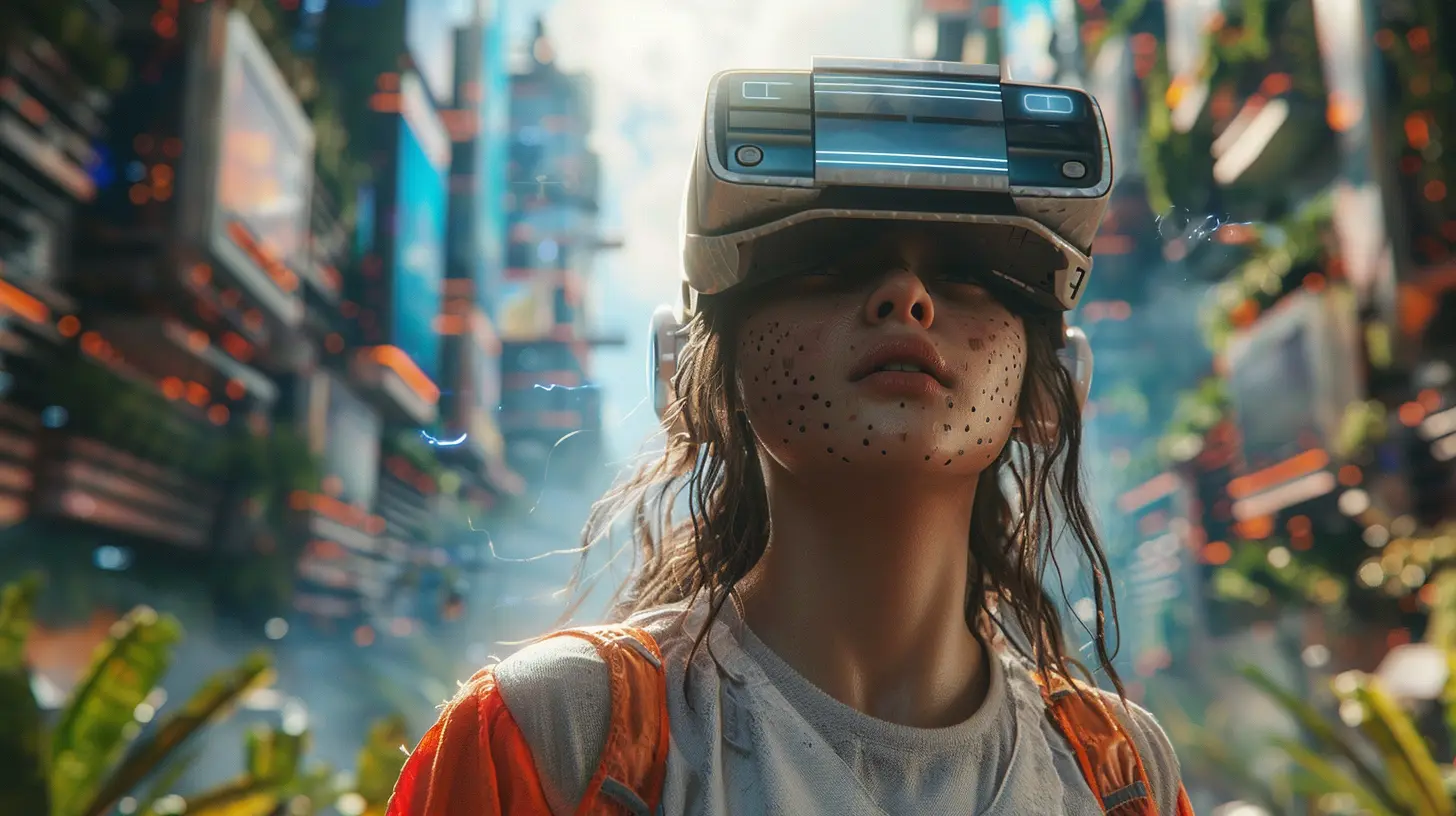The Future of Simulation Games: Virtual Worlds Becoming More Realistic
10 July 2025
Have you ever found yourself playing a simulation game and thinking, “Wow, this feels almost real”? Welcome to the modern age of simulation gaming. From building cities and piloting airplanes to simulating real relationships and life experiences, simulation games have come a long way. But what’s next?
In this article, we’re diving deep into the future of simulation games. We’re talking hyper-realistic visuals, emotional AI, VR integration, and maybe one day… simulation so real you'll forget it's a game. Sounds wild, right? Let’s unpack what's coming and how the simulation genre is gearing up to blur the lines between virtual and reality.
What Are Simulation Games, Really?
Before we blast into the future, let's hit pause and look at what simulation games actually are. In simple terms, simulation games mimic real-life activities for entertainment, training, or analysis. You might know some big names like The Sims, Flight Simulator, Farming Simulator, or Cities: Skylines.These games aren’t just about fun—they’re also about control, creativity, and exploration. They put you in the driver’s seat (sometimes literally) and let you experience life at your own pace, in your own world.
The Current State of Simulation Games
Right now, simulation games are pretty advanced. You can build a thriving metropolis, manage a football team, or live a second life. The graphics are decent, the mechanics are deep, and the AI is, well, good enough.Yet, even with all that, they still feel like games. The lighting isn't quite right, the characters don’t behave like real people, and, let’s be real, how many chickens can you really herd before it starts feeling repetitive?
The future? It’s a whole different story.
Let’s Talk Graphics: Hyper-Realism Is the New Norm
We’re moving past “good graphics” to something almost scary—photorealism. With technologies like real-time ray tracing and advanced shaders, developers are now crafting environments that look indistinguishable from real life.Ray Tracing and Real-Time Lighting
Ray tracing simulates real-world lighting. Shadows fall where they should, reflections mirror exactly what's behind you, and water looks like, well, real water.Games like Microsoft Flight Simulator are already pushing the boundaries of realism. Flying over your actual house, seeing the correct weather in real-time, and even navigating real-world air traffic? That’s not just progress—that’s next-level immersion.
AI-Enhanced Animations
AI now plays a massive role in bringing characters to life. Instead of repetitive, robotic motions, we’re seeing fluid, believable animations that adapt to the environment. Think characters who drink coffee when they’re tired, pace when they’re nervous, or smile when you compliment them.
Virtual Reality: The Game-Changer
If there’s one tech that's shaking up the simulation genre, it's VR. Virtual Reality isn’t just a gimmick anymore—it's becoming the core of how we engage with simulated worlds.VR + Simulation = Total Immersion
Imagine playing a farming simulation where you physically plant seeds, milk cows, and ride tractors—all in first-person using VR. Or hopping into a VR cockpit in a flight simulator, grabbing the controls with your own hands. Sounds cool? It's already happening.Oculus Quest, Valve Index, and PlayStation VR2 are just a few headsets redefining how we interact with digital realities. And with haptic feedback? You can feel the wind, the resistance in the throttle, even the vibrations from a nearby explosion.
Artificial Intelligence Is Getting Smarter—And More Human
Ever talk to an NPC and get the same line over and over? Yeah, we’ve all been there. But AI is quickly evolving past that. In the near future, we may interact with characters who remember us, react differently depending on our past choices, and even learn from us.Emotional AI and Dynamic Decision-Making
We're talking about characters who express emotions based on your actions. Treat them poorly, and they may avoid you or retaliate later. Treat them well, and they could become loyal allies or even friends.Developers are tapping into machine learning algorithms that allow simulations to adapt—not just within a single session, but across your entire story arc.
Procedural Generation: Infinite Worlds Await
Ever get bored playing the same map over and over? Say hello to procedural generation—the holy grail of content replayability.What Is It?
Procedural generation uses algorithms to create new content on the fly. That means every city, planet, or dungeon can be unique. Games like No Man’s Sky and Minecraft have already scratched the surface, but we’re headed for a time where entire complex ecosystems will be generated in real-time.Imagine a life simulation where every character, house, job, and relationship is dynamically generated and constantly evolving. You would literally never play the same game twice.
Augmented Reality: Blurring the Real and Virtual Worlds
While VR puts you in the game, augmented reality (AR) brings the game to you. Remember Pokémon GO? That was just the beginning.Merging Simulations With Real Life
Picture this: You’re cooking in your real kitchen, but your AR glasses show ingredients and timers for a cooking simulator. Or you’re walking in your neighborhood and see digital buildings and people overlaying real ones through your glasses.AR has the power to merge games with everyday life in ways that are both exciting and slightly uncanny.
Social Simulation: Relationships That Feel Real
It might sound odd, but social simulation is booming, and it's getting… weirdly emotional.AI-Driven Relationships
In future simulation games, building bonds with AI characters could feel alarmingly real. You'll have friends and enemies that evolve with your personality, who develop unique relationships with you, who remember past conversations.You’ll also see more simulations that explore complex social systems—things like politics, religion, climate change, and even economics—all inside a game world.
Ethics and Emotional Depth in Simulations
As simulations become more realistic, players are starting to grapple with ethical decisions. Do I save this character? Do I let this city go bankrupt to fund a new project? These aren’t just game mechanics anymore. They’re moral dilemmas that feel heavy—and that’s kind of the point.Emotional Storytelling
Simulation games are also leaning into emotional narratives. Games like This War of Mine and Frostpunk already highlight the human cost of survival and leadership. The future promises even more deeply personal consequences to player choices.The Role of Cloud Gaming and AI-Powered Engines
Game worlds are getting too big for your average device. That’s where cloud gaming comes in. Imagine running a massive, high-definition, AI-driven simulation on a $30 phone—because all the heavy lifting is done in the cloud.AI-Driven Game Engines
We’re also seeing the rise of AI-assisted game development. Tools like Unity and Unreal Engine are integrating machine learning for world-building, behavior modeling, and real-time feedback, shortening dev time while enhancing complexity.This allows for game worlds that aren’t just vast—they’re alive.
Simulation Games for More Than Fun
Let’s not forget—simulation games aren't just entertainment. They're being used in education, therapy, training, and even space exploration.- Medical Simulators help train real doctors.
- Flight Simulators shape elite pilots.
- Military Simulations teach strategy under pressure.
In the future, simulation games could power everything from job training to psychological healing. You might even “test drive” a career in a simulated environment before pursuing it in real life.
What's Next? A Peek Into Tomorrow
So, what does the future look like? Here’s where things get exciting:- Sentient NPCs driven by generative AI.
- Massive persistent worlds that continue growing even when you’re offline.
- Neural interfaces that let you control games with your thoughts.
- Real-world parity, where digital cities mirror real ones in real-time.
- Emotion tracking—games that read your mood and adjust accordingly.
Let that sink in. The line between game and reality is vanishing fast. In the next 5 to 10 years, simulation games might not just reflect reality—they may become indistinguishable from it.
Final Thoughts: A Brave New (Simulated) World
The future of simulation games is pretty mind-blowing. Whether you're a city builder, life simulator addict, or flight enthusiast, there's a whole new level of immersion coming your way. We’re not just talking better graphics—we’re talking smarter AI, emotional depth, and experiences that feel truly alive.But with that comes responsibility. Developers and players alike will need to navigate moral and ethical implications, privacy questions, and the potential for escapism to go too far.
Still, one thing’s for sure—simulation games are evolving, and the future is looking more “real” than ever.
Ready to plug in?
all images in this post were generated using AI tools
Category:
Simulation GamesAuthor:

Greyson McVeigh
Discussion
rate this article
1 comments
Beau Alexander
Excited for the possibilities ahead in simulation gaming!
August 2, 2025 at 4:03 AM

Greyson McVeigh
Thank you! The future looks promising, and we can't wait to see how these advancements enhance our gaming experiences.


